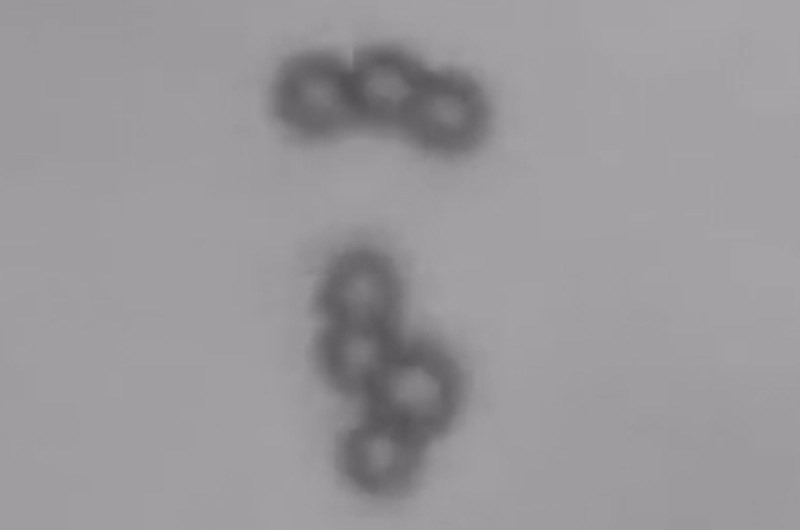
A team of researchers have developed an assembly of microscopic robots, suspended in liquid, that assemble and swim together at remarkable speeds when exposed to a rotating magnetic field.
This finding represents a key step in the development of 'microswimmers' for the delivery of medicine and the performance of surgery inside the body.
Microscale 'Transformer' Robots
We believe microswimmer robots could one day be used to carry out medical procedures and deliver more direct treatments to affected areas inside the body. They can be highly effective for these jobs because they’re able to navigate in many different biological environments, such as the blood stream and the microenvironment inside a tumor.
Dr. U Kei Cheang, - University of Drexel
The robot chains move as a long, screw-like propeller as each individual robot in the chain spins in response to the external rotating magnetic field. Increasing the external field strength increases the rate the robots spin at which, in turn, increases the velocity of the robot chain, allowing the velocity of the chain to be controlled. The magnetic field can also be used to divide the chain into shorter segments as, at certain magnetic frequencies, the chain will split into two separate smaller chains which move independently of one-another.
To disassemble the microswimmer we simply increased the rotation frequency. For a seven-bead microswimmer, we showed that by upping the frequency 10-15 cycles the hydrodynamic stress on the swimmer physically deformed it by creating a twisting effect, which leads to disassembly into a three-bead and four-bead swimmer.
Dr. U Kei Cheang, - University of Drexel
After being separated, the field can be adjusted to make the smaller robots travel in different directions. The beads can also be reconnected as they are magnetized. This is achieved by tweaking the field to bring them back into contact.
This finding is a vital part of a bigger project in which Drexel is collaborating with 10 institutions of medicine and research from across the world to develop technology for executing minimally invasive surgery on blocked arteries.
For applications of drug delivery and minimally invasive surgery, future work remains to demonstrate the different assembled configurations can achieve navigation through various in vivo environments, and can be constructed to accomplish different tasks during operative procedures. But we believe that the mechanistic insight into the assembly process we discussed in this research will greatly aid future efforts at developing configurations capable of achieving these crucial abilities.
Dr. U Kei Cheang, - University of Drexel